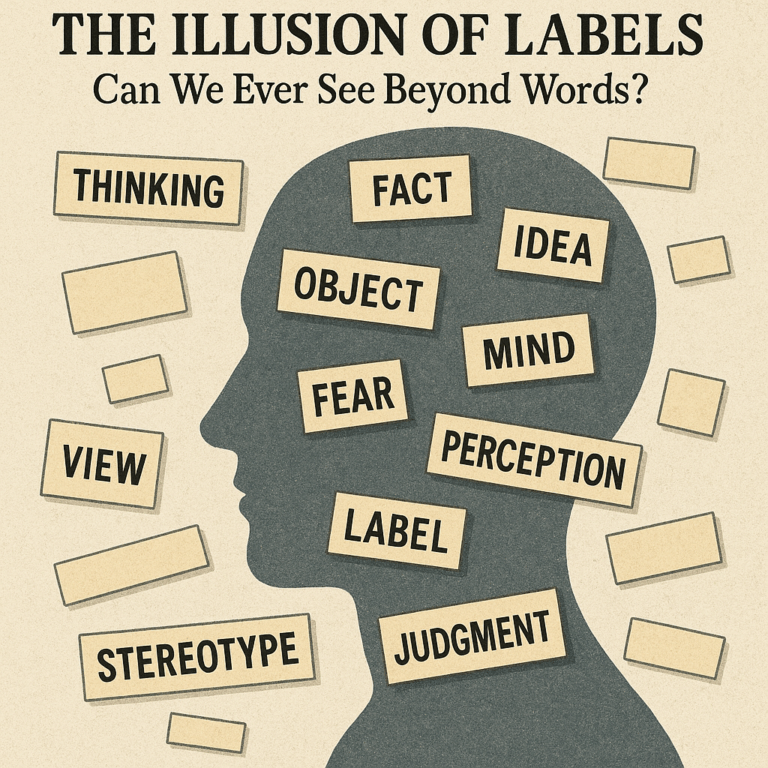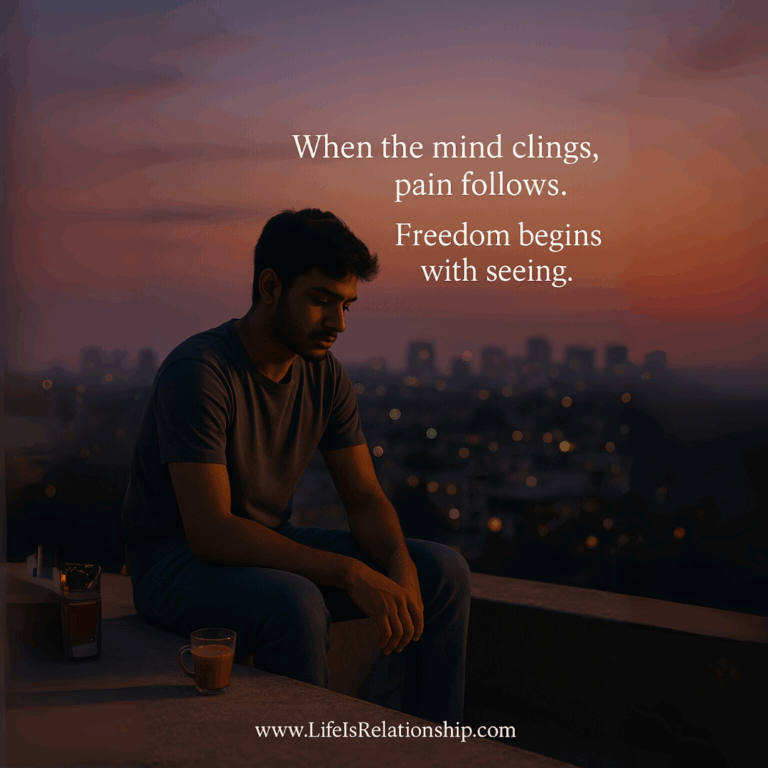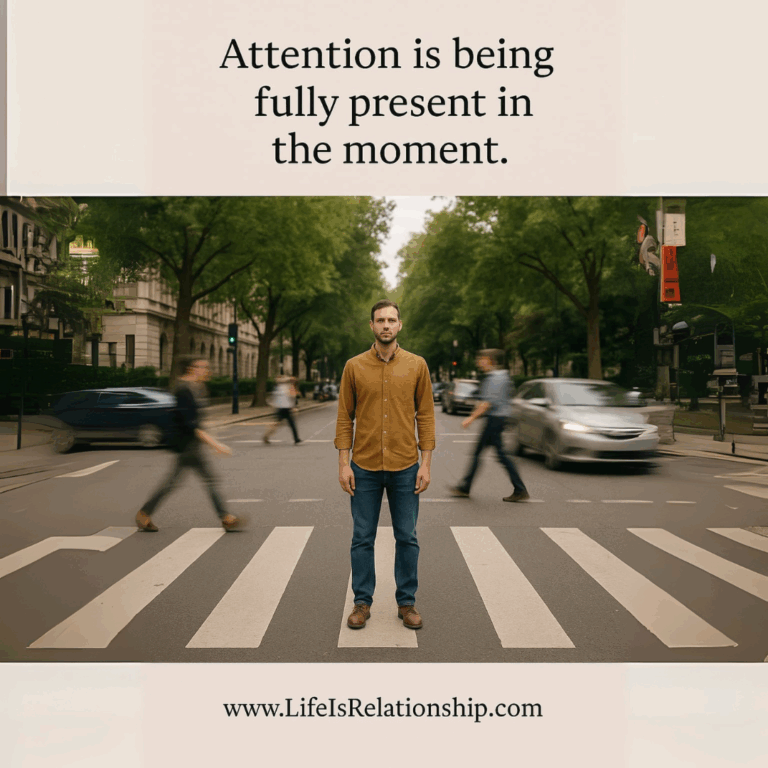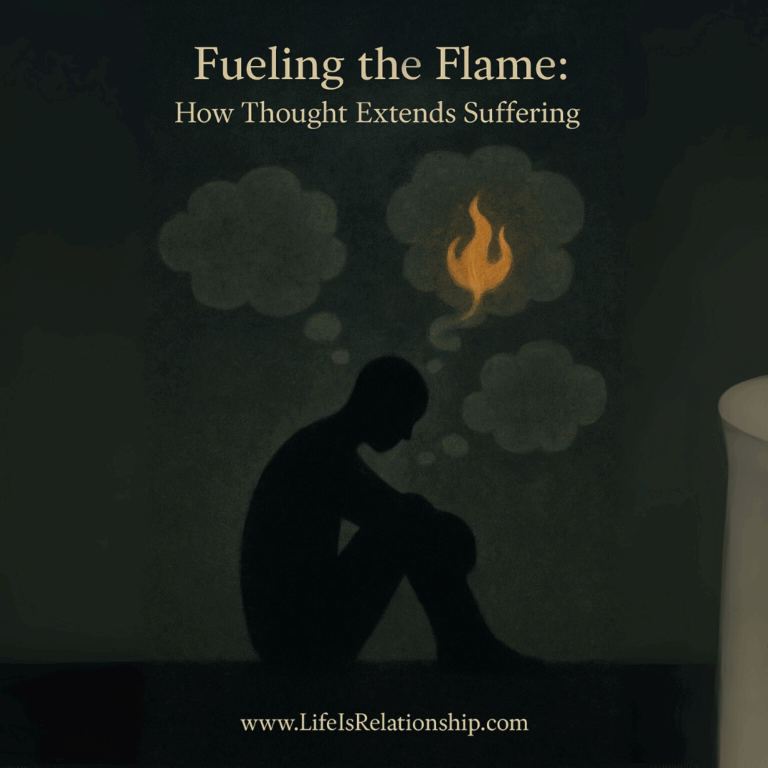Have you ever paused to consider the nature of your identity? How much of who you think you are is a creation, a construct built over time through experiences, achievements, and societal roles?
This process of self-image creation occurs within us and is continuously reinforced through our interactions with society, subtly and overtly. Let’s embark on a journey of inquiry together.
The Invisible Threads of Self-Image
Consider a king, adorned in flowing robes and a gleaming crown. People bow in his presence, reinforcing his sense of importance. Over time, his identity becomes inextricably linked to these external symbols. But what happens when we peel away these layers?
– When someone challenges the king’s authority, is it truly the king being attacked?
– Or is it merely the image he has constructed about himself that feels threatened?
Reflect: If we strip away the robes, the crown, and the ceremonies, what remains of the king’s identity? Is there an essential “kingness” that exists independently of these external trappings?
The Average Person’s Armor: Achievements and Relationships
Now, let’s turn our gaze to the average person. Their self-image might be built on career success, social achievements, or personal relationships. When praised, they feel a sense of pride. When criticized, they experience hurt. But again, we must ask:
– Is it the person themselves being attacked when their work is criticized?
– Or is it just the image they’ve formed about who they are that feels wounded?
Consider: How much of your own sense of self is tied to your achievements or relationships? If these were suddenly taken away, who would you be?
The Seeds of Self-Image: Childhood Conditioning and Societal Reinforcement
This process of creating and protecting self-images begins early in life and continues through adulthood, often without our awareness. From childhood, we are shaped by our environment, praised for achievements, admired for skills. Society, through various institutions and relationships, subtly and overtly reinforces these self-images.
– How do childhood experiences contribute to our self-image?
– In what ways does society reinforce or challenge our self-perceptions?
Reflect: Can you identify moments in your life where societal expectations or norms have shaped your self-image?
The Shadow of Inadequacy: Negative Self-Images
Consider Sarah, a talented artist who constantly doubts her abilities. Despite her skills, she’s formed a self-image based on the conclusion “I’m not good enough.” This image wasn’t formed in isolation but crafted through experiences and comparisons:
– A teacher’s offhand comment about her technique years ago
– Comparing her work to established artists and feeling inadequate
– The societal pressure to achieve financial success through art
Sarah’s negative self-image impacts her daily life, influencing her decisions and interactions. But is this image real, or is it a construct based on selective experiences and societal pressures?
Reflect: Can you identify any negative self-images you hold? How might these have been formed through experiences or comparisons?
The Implications of Self-Image
Let’s delve deeper into the consequences of holding onto these self-images, whether positive or negative:
– How do our self-images influence our relationships with others?
– In what ways might they limit our potential or prevent us from trying new things?
– How do they affect our emotional responses to daily situations?
Consider: How might your life change if you let go of your most deeply held self-image?
Unconditioned Observation: Seeing Without Filters
Imagine observing yourself without any desire to change or judge what you see. This is what we might call unconditioned observation.
– What would it be like to look at yourself without the filter of your accumulated knowledge and experiences?
– How might this differ from your usual way of self-reflection?
Try this: Observe your thoughts and feelings for a few moments as if you’re encountering them for the first time. Can you watch without labeling or judging?
The Limitation of Knowledge: A Barrier to True Seeing?
We accumulate knowledge about ourselves throughout our lives, building a complex self-image. But could this knowledge prevent us from seeing ourselves as we truly are?
– How might your ideas about who you are limit your perception of yourself in the present moment?
– What would it mean to approach each moment with a mind free from the past?
Reflect: Can you recall when you saw yourself or a situation with fresh eyes, free from preconceptions? What was that experience like?
Beyond the Self-Image: A New Way of Living?
What possibilities might open up if we begin to see through the illusion of our constructed self-image?
– What would life be like if we no longer felt compelled to defend or protect our self-image?
– How might our relationships and interactions change if we weren’t constantly seeking validation for our constructed selves?
Consider: What would a day in your life look like if you weren’t concerned with maintaining or improving your self-image? How would you interact with others? How would you approach challenges?
In questioning the existence of a fixed self, we open up the possibility of living radically differently. Perhaps there’s a freedom to be found not in building a better self-image, but in seeing through the illusion of the self altogether.
As we conclude this inquiry, let’s sit with these questions: Is there really such a thing as a permanent, unchanging self? Or is what we call “self” just an ongoing process of thought, constantly creating and reinforcing an image? In the space of not knowing, of holding these questions without rushing to answers, might we discover a new way of being in the world?
This inquiry is not about reaching a conclusion, but about staying with the questions, observing our reactions, and perhaps catching a glimpse of what lies beyond our constructed identities. Isn’t this exploration, this journey into the nature of our own minds, worth undertaking?













